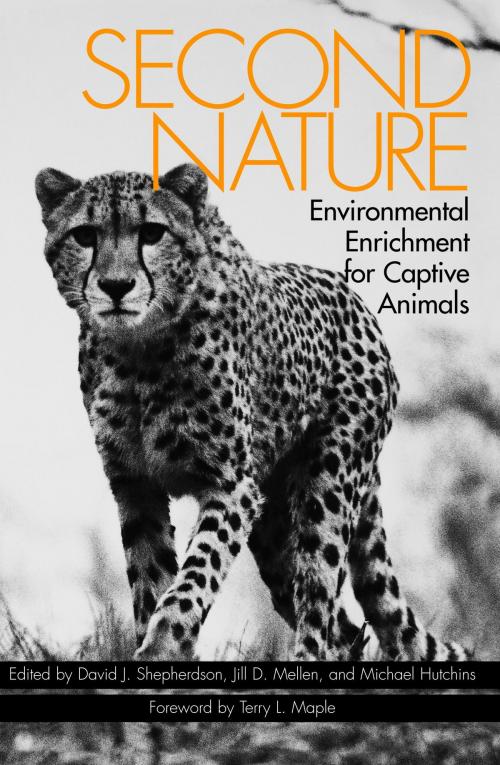Second Nature
Environmental Enrichment for Captive Animals
Nonfiction, Science & Nature, Nature, Animals, Animals Rights, Science, Biological Sciences, Zoology, Environment, Environmental Conservation & Protection| Author: | ISBN: | 9781588343659 | |
| Publisher: | Smithsonian | Publication: | January 11, 2012 |
| Imprint: | Smithsonian Books | Language: | English |
| Author: | |
| ISBN: | 9781588343659 |
| Publisher: | Smithsonian |
| Publication: | January 11, 2012 |
| Imprint: | Smithsonian Books |
| Language: | English |
Growing recognition of the complexity of animals' physical, social, and psychological lives in the wild has led both zookeepers and the zoo-going public to call for higher environmental standards for animals in captivity.
Bringing together the work of animal behaviorists, zoo biologists, and psychologists, Second Nature explores a range of innovative strategies for environmental enrichment in laboratories and marine parks, as well as in zoos. From artificial fleeing-prey devices for leopards to irregular feeding schedules for whales, the practices discussed have resulted in healthier, more relaxed animals that can breed more easily and can exert some control over their environments. Moving beyond the usual studies of primates to consider the requirements of animals as diverse as reptiles, amphibians, marine mammals, small cats, hooved grazers, and bears, contributors argue that whether an animal forages in the wild or plays computer games in captivity, the satisfaction its activity provides—rather than the activity itself—determines the animal's level of physical and psychological well-being.
Second Nature also discusses the ways in which environmental enrichment can help zoo-bred animals develop the stamina and adaptability for survival in the wild, and how it can produce healthier lab animals that yield more valid test results. Providing a theoretical framework for the science of environmental enrichment in a variety of settings, the book renews and extends a humane approach to the keeping and conservation of animals.
Growing recognition of the complexity of animals' physical, social, and psychological lives in the wild has led both zookeepers and the zoo-going public to call for higher environmental standards for animals in captivity.
Bringing together the work of animal behaviorists, zoo biologists, and psychologists, Second Nature explores a range of innovative strategies for environmental enrichment in laboratories and marine parks, as well as in zoos. From artificial fleeing-prey devices for leopards to irregular feeding schedules for whales, the practices discussed have resulted in healthier, more relaxed animals that can breed more easily and can exert some control over their environments. Moving beyond the usual studies of primates to consider the requirements of animals as diverse as reptiles, amphibians, marine mammals, small cats, hooved grazers, and bears, contributors argue that whether an animal forages in the wild or plays computer games in captivity, the satisfaction its activity provides—rather than the activity itself—determines the animal's level of physical and psychological well-being.
Second Nature also discusses the ways in which environmental enrichment can help zoo-bred animals develop the stamina and adaptability for survival in the wild, and how it can produce healthier lab animals that yield more valid test results. Providing a theoretical framework for the science of environmental enrichment in a variety of settings, the book renews and extends a humane approach to the keeping and conservation of animals.















